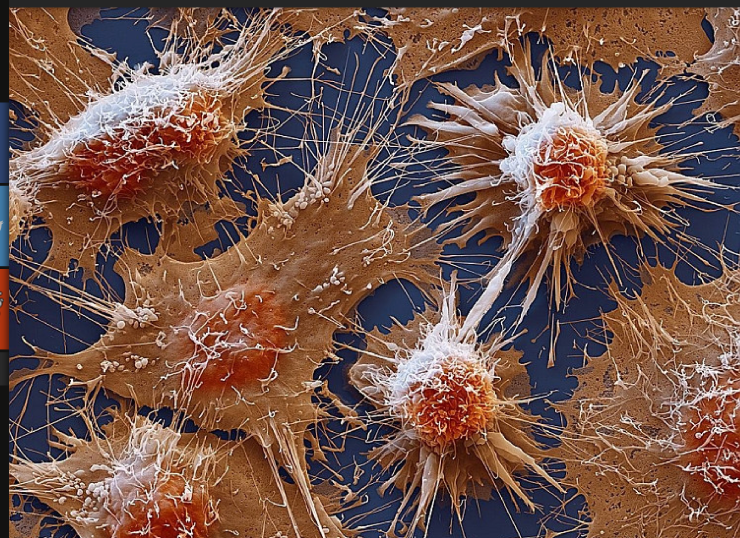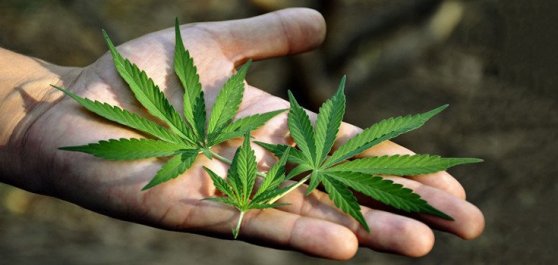For those who believe, no proof is necessary, For those who do not believe, no proof is possible. [Stuart Chase, MIT]

The Fictitious 1899 Interview with Tesla
The internet is abuzz with re-posts of a supposed 1899 interview with Nikola Tesla by journalist ‘John Smith.’
As much as we may like this to be real, it is not. Instead, it is a poorly translated excerpt from a play, ‘Tesla: Or Customisation of an Angel’ (meaning, “customisation of” Tesla) by Stevan Pešić, a Serbian playwright.

- Einstein was only 20 years old during this supposed interview. His Theory of Relativity didn’t begin development until 1905, and he published his theory of general relativity in 1915. In any case, Tesla didn’t begin criticising the theory until later in his life.
- The word “radar” was not coined until the late 1930s, and the radar was patented in 1935.
- Black holes were not yet dreamed of–Albert Einstein first predicted the existence of black holes in 1916, with his general theory of relativity. The term “black hole” was coined many years later, in 1967, by American astronomer John Wheeler.
- Mark Twain, Tesla’s close friend, had not yet completed The ‘Mysterious Stranger.’
- Also, Tesla did not meet and care for his beloved pigeon until far later in his life.
- And there has never existed a publication called ‘Immortality’ in Colorado, in the US—Pešić chose the title as a symbol of Tesla’s legacy.
- Oh, and Tesla was not on his deathbed in 1899—He died in 1943.
FOR THE CURIOUS
- The list of defunct American magazines [Immortality is not listed]
-
Tesla’s timeline in 1899
-
The National Theatre in Belgrade’s play entry [the play is not currently on their repertoire]
-
An actual interview with Nikola Tesla by Samuel Cohen was published in The Electrical Experimenter in June 1915. Vol. III, Whole No. 26, continues on pages 39 and 45.
-
FBI archive holds 354 pages of Tesla’s papers in three parts, much of which is redacted (blacked out) for reasons of “national security.”
- 5 Surprising Facts About Nikola Tesla, National Geographic
- Blic magazine article about the 200th performance of the play [in Serbian; use Chrome browser with translate enabled].
∞
© 2016 Lilyana Millutin, All rights reserved. Reprinted here with the author’s permission. For other permissions, contact the copyright holder.
Lilyana Millutin is an Australian screenwriter and author. Be social with Lilyana on Twitter or on Facebook.

30+ Reasons Why THC is Effective in Treating Cancer
Conventional medicine seems further from a cure for cancer than when the search began decades ago. After billions of dollars of expenditure on research, the cancer rate still continues to climb.

Cancer cells under electron microscope
Cancer is the second leading cause of death in the western countries, second only to heart disease. According to the World Health Organisation (WHO), every day worldwide, over 22,000 people die of cancer (2012 estimates). The number of new cases is expected to rise by about 70% over the next 2 decades. With such high numbers, virtually every family is at risk.
Ironically, the ancient remedies that have been tried and tested over millennia are being debated or kept out of the mainstream.
Chemotherapy and radiation are far from safe. Both are extremely invasive, and neither can be selective, destroying the body’s immune system along the way. Surgery, where appropriate, is specific and can be the tipping point, particularly when followed up with natural medicines.
The magic word is – Balance. The balance between modern treatments and ancient remedies.
The majority of cancers, some 90–95% of cases, are due to environmental factors, which are largely within one’s control. The remaining 5–10% are due to inherited genetics.
Over time, DNA declines, as the telomeres, which protect the end of a chromosome from deterioration, shorten. Explanation in the American Journal of Human Biology suggests that shorter telomeres are associated with increased cancer rates.
Remediating external factors, such as diet, has been shown to prevent new cancer cells from forming. And natural remedies play a significant role in this.
What natural remedies – including Vitamin D, C, and B17 (strictly speaking, not a vitamin), and phytocannabinoids (specifically, delta-9-THC), among others – seem to do particularly well, is have the beneficial effect on our immune system as well as prevent the formation of new cancer cells.
Also, extensive medical studies into the effects of phytocannabinoids have shown that delta-9-THC also inhibits the tumor by selectively blocking key blood vessels needed for tumor growth, and so causes cancer cell death. Phytocannabinoids – the key active ingredient in cannabis – were found effective in fighting against colon cancer, liver cancer, breast cancer and several other forms of the disease.
Below are just some peer review studies that show that phytocannabinoids have an effect on many different types of cancer cells.

The incredible weed
Peer Review Studies
Cannabis, Cannabinoids and Cancer – The Evidence so Far, Cancer Research UK
Are Telomeres The Key To Aging And Cancer? – Learn Genetics, Genetic Science Learning Centre
History of the Medical Use of Cannabis and Cannabinoids, USA National Cancer Institute
The links below lead to NCBI, which is a search engine for scientific and medical journals. You will notice that they source the information from many global peer review journals.
Cannabis and Uterine, Testicular, and Pancreatic Cancers, USA National Cancer Institute
Cannabis-derived substances in cancer therapy–an emerging anti-inflammatory role for the cannabinoids, NCBI
Cannabis and Brain Cancer, US National Library of Medicine, National Institutes of Health
Cannabis and Mouth and Throat Cancer, US National Centre for Biology Information
Anti-tumoral action of cannabinoids on hepatocellular [liver] carcinoma, NCBI
Cannabinoids in intestinal inflammation and cancer:
https://www.ncbi.nlm.nih.gov/pubmed/19442536
Cannabis use and cancer of the head and neck: Case-control study: www.ncbi.nlm.nih.gov/pmc/articles/PMC2277494
Cannabis THC at High Doses in Area, Inhibits Cholangiocarcinoma cancer: www.ncbi.nlm.nih.gov/pubmed/19916793
Targeting CB2 Cannabinoid Receptors as a Novel Therapy to treat Malignant Lymphoblastic Disease: http://www.ncbi.nlm.nih.gov/pubmed/21115947
Cannabis Regulator of Neural Cell Development: ttp://www.ncbi.nlm.nih.gov/pubmed/16787257
Cannabis treatment of Melanoma: http://www.ncbi.nlm.nih.gov/pubmed/17065222
Cannabis Treatment for Thyroid Carcinoma: http://www.ncbi.nlm.nih.gov/pubmed/18197164
Cannabinoids in Intestinal Inflammation & Cancer : http://www.ncbi.nlm.nih.gov/pubmed/19442536
Cannabinoids in Health and Disease: http://www.ncbi.nlm.nih.gov/pubmed/18286801
Cannabis a Neuroprotective After Brain Injury: http://www.ncbi.nlm.nih.gov/pubmed/11586361
Cannabis Inhibits Cancer Cell Invasion: http://www.ncbi.nlm.nih.gov/pubmed/19914218
Cannabis treatment of translocation-positive rhabdomyosarcoma: http://www.ncbi.nlm.nih.gov/pubmed/19509271
Cannabis Induces apoptosis of uterine cervix cancer cells: http://www.ncbi.nlm.nih.gov/pubmed/15047233
Cannabis Treatment in Colon Cancer: http://www.ncbi.nlm.nih.gov/pubmed/18938775
http://www.ncbi.nlm.nih.gov/pubmed/19047095
Cannabis and Colorectal Cancer:
http://www.ncbi.nlm.nih.gov/pubmed/22231745
http://www.ncbi.nlm.nih.gov/pubmed/17583570
Cannabis and Cancer Cells:
http://www.ncbi.nlm.nih.gov/pubmed/16818634
http://www.ncbi.nlm.nih.gov/pubmed/12648025
Marijuana and Cancer Cells:
http://www.ncbi.nlm.nih.gov/pubmed/17952650
http://www.ncbi.nlm.nih.gov/pubmed/16835997
Cannabis and Blood Cancer:
http://www.ncbi.nlm.nih.gov/pubmed/12091357
http://www.ncbi.nlm.nih.gov/pubmed/16908594
Cannabis and Skin Cancer:
http://www.ncbi.nlm.nih.gov/pubmed/12511587
http://www.ncbi.nlm.nih.gov/pubmed/19608284
Cannabinoids and the Immune System:
http://www.ncbi.nlm.nih.gov/pubmed/11854771
http://www.ncbi.nlm.nih.gov/pubmed/12052046
Cannabis and Lung Cancer:
http://www.ncbi.nlm.nih.gov/pubmed/22198381?dopt=Abstract
http://www.ncbi.nlm.nih.gov/pubmed/21097714?dopt=Abstract
Cannabis and Tumor Cells:
http://www.ncbi.nlm.nih.gov/pmc/articles/PMC1576089
http://www.ncbi.nlm.nih.gov/pubmed/20090845
http://www.ncbi.nlm.nih.gov/pubmed/14640910
http://www.ncbi.nlm.nih.gov/pubmed/19480992
http://www.ncbi.nlm.nih.gov/pubmed/15275820
http://www.ncbi.nlm.nih.gov/pubmed/15638794
http://www.ncbi.nlm.nih.gov/pubmed/16818650
http://www.ncbi.nlm.nih.gov/pubmed/17952650
http://www.ncbi.nlm.nih.gov/pubmed/20307616
http://www.ncbi.nlm.nih.gov/pubmed/16616335
http://www.ncbi.nlm.nih.gov/pubmed/16624285
http://www.ncbi.nlm.nih.gov/pubmed/10700234
http://www.ncbi.nlm.nih.gov/pubmed/17675107
http://www.ncbi.nlm.nih.gov/pubmed/14617682
http://www.ncbi.nlm.nih.gov/pubmed/17342320
http://www.ncbi.nlm.nih.gov/pubmed/16893424
http://www.ncbi.nlm.nih.gov/pubmed/15026328
Cannibas Partially & Fully Induced Cancer Cell Death:
http://www.ncbi.nlm.nih.gov/pubmed/12130702
http://www.ncbi.nlm.nih.gov/pubmed/19457575
http://www.ncbi.nlm.nih.gov/pubmed/18615640
http://www.ncbi.nlm.nih.gov/pubmed/17931597
http://www.ncbi.nlm.nih.gov/pubmed/18438336
http://www.ncbi.nlm.nih.gov/pubmed/19916793
http://www.ncbi.nlm.nih.gov/pubmed/18387516
http://www.ncbi.nlm.nih.gov/pubmed/15453094
http://www.ncbi.nlm.nih.gov/pubmed/19229996
http://www.ncbi.nlm.nih.gov/pubmed/9771884
http://www.ncbi.nlm.nih.gov/pubmed/18339876
http://www.ncbi.nlm.nih.gov/pubmed/12133838
http://www.ncbi.nlm.nih.gov/pubmed/16596790
http://www.ncbi.nlm.nih.gov/pubmed/11269508
http://www.ncbi.nlm.nih.gov/pubmed/15958274
http://www.ncbi.nlm.nih.gov/pubmed/19425170
http://www.ncbi.nlm.nih.gov/pubmed/17202146
http://www.ncbi.nlm.nih.gov/pubmed/11903061
http://www.ncbi.nlm.nih.gov/pubmed/15451022
http://www.ncbi.nlm.nih.gov/pubmed/20336665
http://www.ncbi.nlm.nih.gov/pubmed/19394652
http://www.ncbi.nlm.nih.gov/pubmed/11106791
http://www.ncbi.nlm.nih.gov/pubmed/19189659
http://www.ncbi.nlm.nih.gov/pubmed/16500647
http://www.ncbi.nlm.nih.gov/pubmed/19539619
http://www.ncbi.nlm.nih.gov/pubmed/19059457
http://www.ncbi.nlm.nih.gov/pubmed/16909207
http://www.ncbi.nlm.nih.gov/pubmed/18088200
http://www.ncbi.nlm.nih.gov/pubmed/10913156
http://www.ncbi.nlm.nih.gov/pubmed/18354058
http://www.ncbi.nlm.nih.gov/pubmed/19189054
http://www.ncbi.nlm.nih.gov/pubmed/17934890
http://www.ncbi.nlm.nih.gov/pubmed/16571653
http://www.ncbi.nlm.nih.gov/pubmed/19889794
http://www.ncbi.nlm.nih.gov/pubmed/15361550
Cannabis and Breast Cancer
http://www.ncbi.nlm.nih.gov/pubmed/20859676
http://www.ncbi.nlm.nih.gov/pubmed/18025276
http://www.ncbi.nlm.nih.gov/pubmed/21915267
http://www.ncbi.nlm.nih.gov/pubmed/22776349
http://www.ncbi.nlm.nih.gov/pubmed/18454173
http://www.ncbi.nlm.nih.gov/pubmed/16728591
http://www.ncbi.nlm.nih.gov/pubmed/9653194
Cannabis and Prostate Cancer:
http://www.ncbi.nlm.nih.gov/pubmed/12746841?dopt=Abstract
http://www.ncbi.nlm.nih.gov/pmc/articles/PMC3339795/
http://www.ncbi.nlm.nih.gov/pubmed/22594963
http://www.ncbi.nlm.nih.gov/pubmed/15753356
http://www.ncbi.nlm.nih.gov/pubmed/10570948
http://www.ncbi.nlm.nih.gov/pubmed/19690545
Cannabis Treatment of Leukemia:
http://www.ncbi.nlm.nih.gov/pubmed/15978942
http://www.ncbi.nlm.nih.gov/pubmed/16754784
http://www.ncbi.nlm.nih.gov/pubmed/15454482
http://www.ncbi.nlm.nih.gov/pubmed/16139274
http://www.ncbi.nlm.nih.gov/pubmed/14692532
Cannabis Treatment of Lymphoma:
http://www.ncbi.nlm.nih.gov/pubmed/18546271
http://www.ncbi.nlm.nih.gov/pubmed/16936228
http://www.ncbi.nlm.nih.gov/pubmed/16337199
http://www.ncbi.nlm.nih.gov/pubmed/19609004
Cannabis and Cancer in General:
http://www.ncbi.nlm.nih.gov/pubmed/12514108
http://www.ncbi.nlm.nih.gov/pubmed/15313899
http://www.ncbi.nlm.nih.gov/pubmed/20053780
http://www.ncbi.nlm.nih.gov/pubmed/18199524
http://www.ncbi.nlm.nih.gov/pubmed/19589225
http://www.ncbi.nlm.nih.gov/pubmed/12182964
http://www.ncbi.nlm.nih.gov/pubmed/19442435
http://www.ncbi.nlm.nih.gov/pubmed/12723496
http://www.ncbi.nlm.nih.gov/pubmed/16250836
http://www.ncbi.nlm.nih.gov/pubmed/17237277
AND MORE FOR THE CURIOUS:
Alternative Cancer Therapies, The Cancer Cure Foundation – Offers free information on over 100 alternative cancer therapies.
Antiemetics in patients receiving chemotherapy for cancer: a randomized comparison of delta-9-tetrahydrocannabinol and prochlorperazine. N Engl J Med 302 (3): 135-8, 1980, Sallan SE, Cronin C, Zelen M, et al. [PUBMED Abstract]
“Cancer is a preventable disease that requires major lifestyle changes”. Pharm. Res. 25 (9): 2097–116. doi:10.1007/s11095-008-9661-9. PMC 2515569. PMID 18626751, Anand P, Kunnumakkara AB, Kunnumakara AB, Sundaram C, Harikumar KB, Tharakan ST, Lai OS, Sung B, Aggarwal BB (September 2008).
Cannabis: pharmacology and toxicology in animals and humans. Addiction 91 (11): 1585-614, 1996, Adams IB, Martin BR [PUBMED Abstract]
Ecological Studies Of Ultraviolet B, Vitamin D And Cancer Since 2000, Grant William B. and Sharif B. Mohr
International Agency for Research on Cancer (IARC)
Marijuana as antiemetic medicine: a survey of oncologists’ experiences and attitudes. J Clin Oncol 9 (7): 1314-9, 1991, Doblin RE, Kleiman MA [PUBMED Abstract]
Vitamin D and Breast Cancer , Bertone-Johnson Elizabeth R.
Vitamin D for Cancer Prevention: Global Perspective, Garland Cedric F., Edward D. Gorham, Sharif B. Mohr and Frank C. Garland
The power of wilful ignorance cannot be overstated
Some of the secrets about how marketers make you buy what they want you to buy: Make you want it, crave it, need it.
.
By using the right choice of words, marketers can focus the conversation to exactly where they want to.
By using the right choice of words, marketers can focus the conversation to exactly where they want to.
By using the right choice of words, marketers can focus the conversation to exactly where they want to.
Technique 1: Everybody believes what’s on the label.
Technique 2: Focus on progress.
Technique 3: Rely on the consumers’ preparedness to look the other way.
What I’m learning in my Marketing studies…
… has put me off marketing alltogether.
